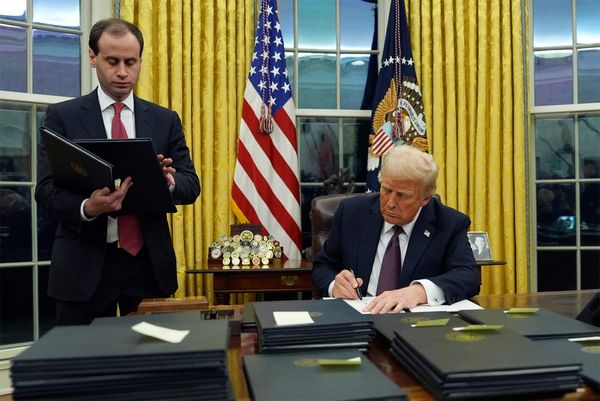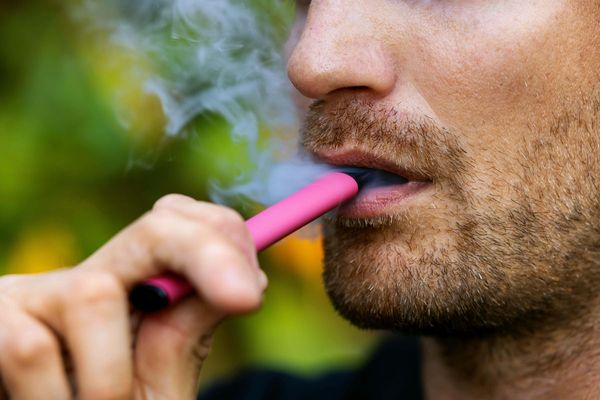
Michael Bradley was Crikey’s lawyer in Lachlan Murdoch’s case against Private Media.
It began at the daily editorial meeting, early morning on June 29 2022. Bernard Keane, Crikey’s prolific political editor, said he could write up the overnight revelations from the then-unfolding drama of the United States congressional investigation into the January 6 2021 insurrection at the Capitol. The editor-in-chief, Peter Fray, said cool, and Bernard went off to do his thing.
Later that morning the draft emerged and, with few changes (because Keane famously produces fast and clean copy for his grateful editors), the article hit the Crikey website and its daily email to subscribers.
The revelations in question emerged from testimony by Cassidy Hutchinson, a former aide to Donald Trump’s chief of staff, broadcast around the world, confirming some of the extent to which Trump had been an active and willing participant in the attempted coup of January 6.
Keane’s article analysed what we now knew of Trump’s direct involvement and its implications for America’s democracy. His conclusions were dire (but hardly exceptional), referring to “mountains of evidence of Trump’s treachery and crimes”.
Keane also drew the historic parallel between Trump’s actions and the Watergate scandal of the 1970s, but distinguished them partly because “Nixon didn’t have the support of the world’s most powerful media company, which continues … to peddle the lie of the stolen election and play down the insurrection Trump created”.
Then the punchline, which Keane has always maintained was a self-evidently hyperbolic statement of his own opinion (as opposed to an assertion of fact):
“If Trump ends up in the dock … as he should be, not all his co-conspirators will be there with him. Nixon was famously the ‘unindicted co-conspirator’ in Watergate. The Murdochs and their slew of poisonous Fox News commentators are the unindicted co-conspirators of this continuing crisis.”
The “unindicted co-conspirator” line was repeated in the article’s title, except that it rendered “Murdoch” singular rather than plural. Which Murdoch? It didn’t say, in keeping with what has been a global standard for many decades. Generally, when people say “Murdoch”, either they mean Rupert, or they have in mind a mythical Gorgon-like creature whose name evokes existential dread.
Whether or not anyone else thought, when they read “Murdoch” in the article, that it was referring to Lachlan Murdoch (as opposed to Rupert, or the Gorgon), apparently Lachlan himself did. His Australian lawyer, John Churchill, issued a defamation concerns notice to Crikey on June 30. It was the fourth time Murdoch (Lachlan, that is) had made such a legal threat to Crikey.
A concerns notice is a letter that the Defamation Act requires; if you don’t issue one and wait 28 days, you can’t sue for defamation at all. Its terms are also prescribed. Most importantly, it has to specify the “defamatory imputations” that the complainant alleges the subject publication conveyed to its audience about him or her. Imputations are not the words (or images), but their meanings.
Murdoch alleged 14 imputations arising from the “unindicted co-conspirator” line in Keane’s article. They cover a lot of ground, from the most benign — that Murdoch illegally conspired with Trump to overturn the 2020 presidential election result — to the most extreme — that Murdoch conspired with Trump to lead an armed mob on Congress, and should be indicted for treason.
Objectively, it’s fair to say that the imputations Murdoch’s lawyers chose were at the outer edge of the range of possible meanings one might claim Keane’s article inferred. This is a not-uncommon tactic in the Australian defamation context, or at least had been in the years before the new public interest defence came into existence. The tactical benefit was that, if you alleged defamatory imputations that could not possibly be proved as true, then you deprived a media publisher of their most potent (and often only available) defence: truth.
Whether that was the plan or not, Crikey like any publisher faced an immediate and urgent concern: the threat of litigation by an infinitely funded complainant who was apparently sincerely upset. Crikey’s first move was one of mitigation, buying it time to properly consider its position; it took the article down. Doing so does not undo the defamation, but it does reduce the harm (if there is any).
Maybe a few thousand people had read Keane’s article before it disappeared; Crikey is a small player in the Australian media landscape, and it’s safe to say that this had registered barely a blip. That would change on August 15, when Crikey republished the original article (with an additional note explaining why), and then on August 22 when it published Murdoch’s concerns notice and all of the subsequent correspondence between Murdoch’s and its own lawyers.
I should also note that, on August 14, The Sydney Morning Herald had run the first public report of Murdoch’s legal threat to Crikey. Obviously someone had told the reporter about the dispute, which was entirely private at this point. The source’s identity would be the subject of some controversy in the court case, ultimately remaining unrevealed (it wasn’t me).
During July and August there had been quite a lot of back and forth between the parties’ lawyers, none of which had resolved the underlying disagreement: Murdoch’s claim that he had been defamed, and Crikey’s insistence that he hadn’t.
The real point in issue would remain throughout the litigation: what exactly Keane’s article had conveyed to readers about Lachlan Murdoch. Crikey maintained that none of Murdoch’s 14 imputations could rationally be drawn from its article’s words. It went further, offering to publish a statement confirming that it did not believe any of those imputations to be true. Murdoch wanted the article taken down permanently, and a public apology for being defamed, without the imputations being repeated. It was a flat stand-off.
Another thing happened on August 22: Crikey published an advertisement in The New York Times (and The Canberra Times), basically asking Murdoch to sue it. The next day, he did, issuing proceedings in the Federal Court of Australia.
So, Crikey got the fight it had asked for. It published its reasons why, and Murdoch pleaded his alternative explanation (essentially, that the whole exercise was a cynical marketing campaign to get more subscribers). From a strictly legal standpoint, Crikey had a viable set of defences. The stage was now set for testing their strength.
Tomorrow: the claims made against Crikey, our defences, and the legal tussles that ensued.







